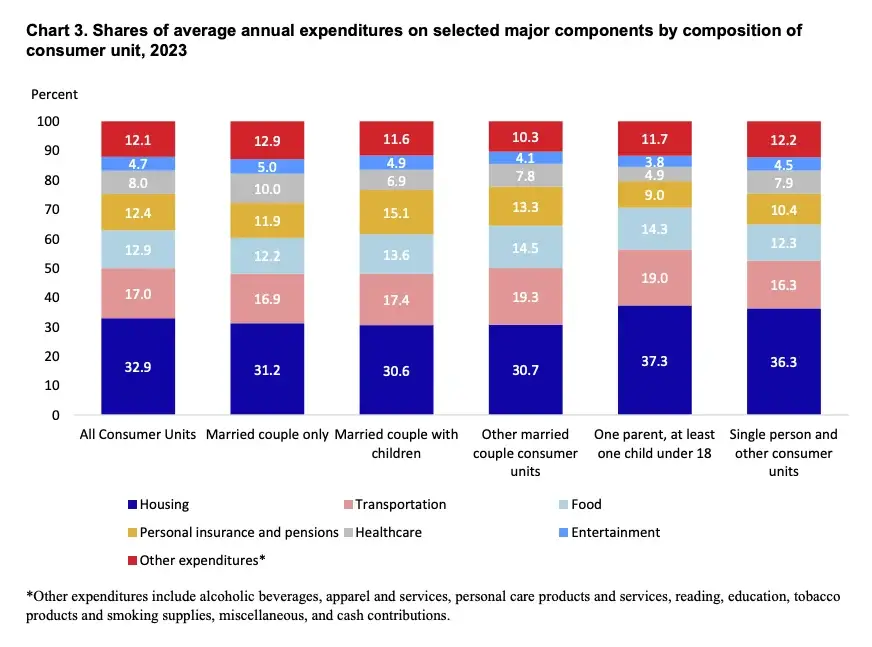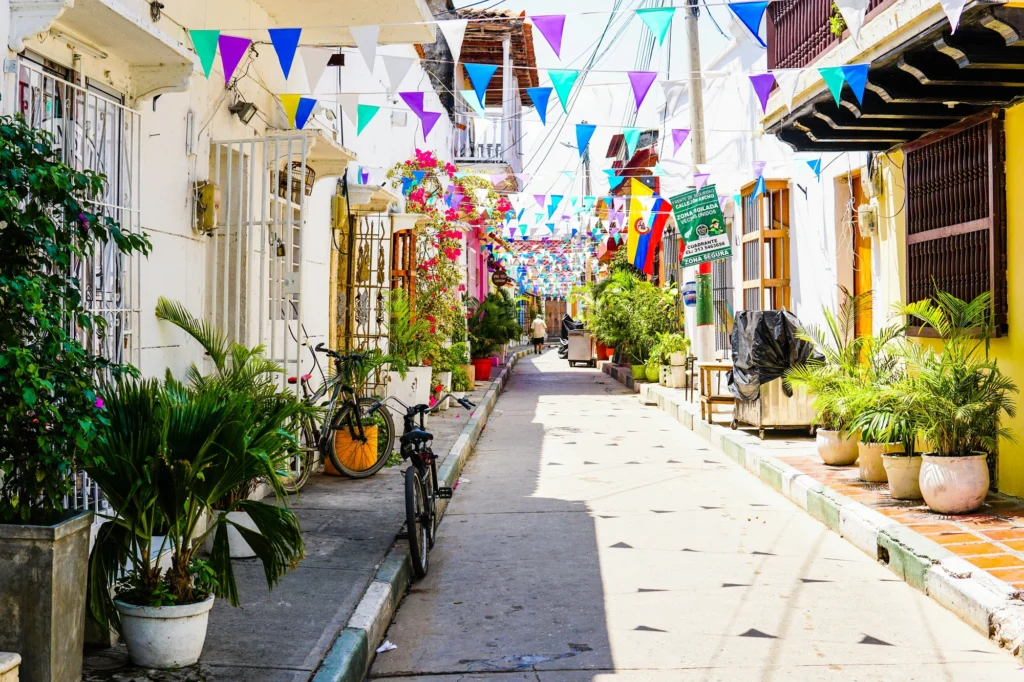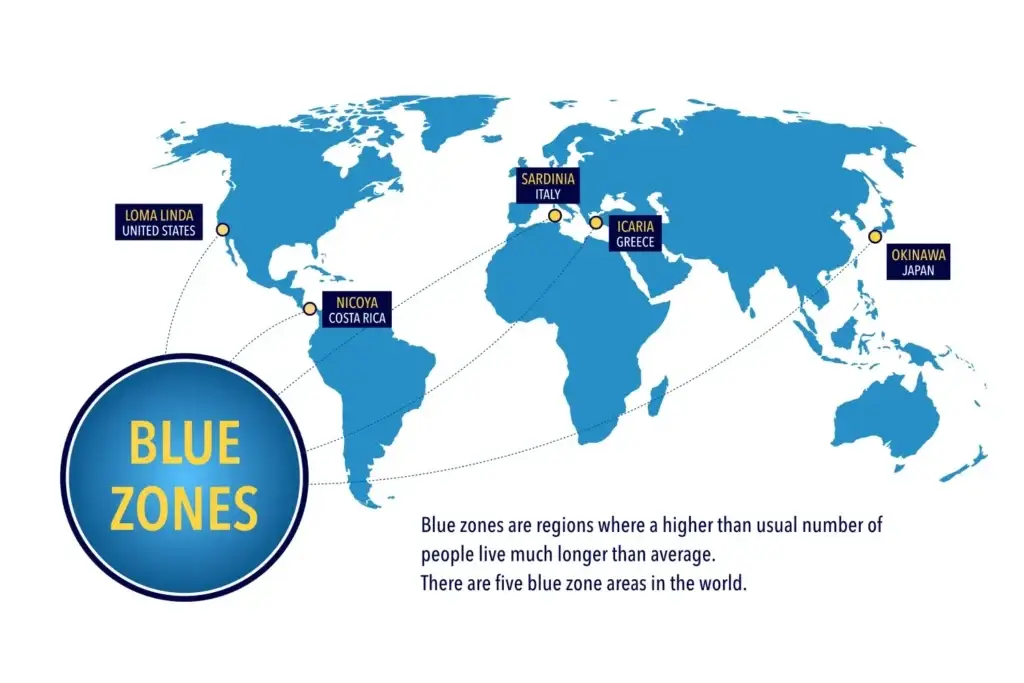The cost of living abroad will shock you when you read this:
Just US$1,500 a month buys you a better life overseas than US$6,000 does in the United States.
How do I know? Because I’ve done it.
I’ve lived abroad for nearly a decade – bought property, gained residency in multiple countries, navigated their healthcare systems, built businesses, found love, and crafted a lifestyle that’s not just cheaper, but healthier, freer, and more fulfilling.
And I’m not the only one. Millions of Americans – especially those nearing or in retirement – are quietly doing the same.
In this article, I’ll break down my actual monthly expenses while living abroad and explain the categories that offer the most savings for people like you considering a life overseas.
Or watch the video here instead:
The State of US Cost of Living
Before we talk about how much cheaper life is overseas, we need to first set a baseline of what you’re paying now.
According to the U.S. Bureau of Labor Statistics, the average American household spends US$6,440 per month, totaling US$77,280 annually.

Let’s break it down:
- Housing — US$2,120 per month (32.9% of one’s expenses)
- Transportation — US$1,098 per month
- Food — US$832 per month
- Healthcare — US$487 per month
- Personal insurance & pensions — US$796 per month
- Entertainment — US$302 per month
These figures don’t even account for taxes. Even in retirement, you could be sacrificing up to 40% of your income to the IRS, depending on your Social Security, pension, or IRA withdrawals.
A high cost of living isn’t an issue in and of itself. The problem arises when people don’t get what they expect out of the products and services they paid for.
So, I ask you – What do you get in return?
High stress?
Rising crime?
Bureaucratic headaches?
Crowded, drug-infested cities?
A political climate that feels perpetually volatile?
For millions of Americans, this feels unfair.
My Real-Life Cost of Living Abroad
I live in Medellín, Colombia, right now. I have for the last four years.
It’s clean, relatively safe (if you take precautions), green, friendly, and extremely affordable – shockingly so for the many friends and family who’ve visited me here.

Here’s what I spend each month:
- Rent — US$600 per month for a brand-new, 3-bedroom apartment with two balconies, modern finishes, and an incredible view of the mountains
- Healthcare — US$80 per month for private insurance and US$30 for a same-day appointment with an English-speaking doctor. Specialists will even visit me at home for blood tests, massages, check-ups, etc. at no extra charge.
- Groceries — US$200-$250 per month. I eat fresh, local, and organic by default. Mangoes, avocados, and local coffee beans cost pennies here compared to the US$14/lb price tag you’d find in California.
- Housekeeper — US$250 per month for a full-time/live-in nanny, maid, or cook. We don’t currently hire anyone, but many expats do.
Total Monthly Cost — Under US$1,500.
Could I spend less? Absolutely.
Could I spend more? Of course.
But the key is that I’m living far better on 30-40% of what I used to spend in the United States. And I’m not scraping by. I’m thriving.
Who wouldn’t take that deal? A more inexpensive but better life abroad? Count me in.
How Life Abroad Slashes Your Cost of Living: By Category
Housing
Your rent or mortgage is probably the biggest line item in your US budget. It is for the wide majority of Americans. In fact, 32.9% of the average household’s expenses are rent- or mortgage-related.
Abroad? Housing is often your biggest savings.
In Colombia, Mexico, Thailand, and much of Eastern Europe, you can find modern, furnished, two-bedroom apartments in safe, central neighborhoods for under US$1,000 per month.
Even in top European expat destinations like Spain, Italy, Portugal, and Greece, an American abroad can save significantly on their housing costs.
But it’s not all about savings.
Moving abroad enables Americans to afford much more luxurious stays for a fraction of what they would cost in the United States, especially if you rent for an extended period or purchase the property outright.
If you’re interested in buying a home abroad, you certainly can.
I purchased a brand new condominium in a nomad and expat hotspot in Colombia for less than what many Americans pay as a down payment. In places like Brazil or Nicaragua, I’ve seen beachfront condos sell for US$100,000-$200,000.
Savings certainly exist. You may just have to leave the United States to find them.
Healthcare
In 1980, healthcare spending was 8.8% of US GDP. In 2020, this figure doubled to almost 20% of GDP.

Of course, this would not inherently be an issue if the quality of the healthcare services doubled as well. But sadly, it has not.
Even with Medicare or employer-backed insurance, Americans are stuck shelling out thousands of dollars each year in premiums, co-pays, and surprise bills.
The average American will pay US$165,000 for healthcare in their retirement years. This is absurd.
Abroad?
You get world-class, public or private care for a fraction of the price – sometimes no price at all!
And as is the case in most of Latin America, healthcare services may come to your home at no additional cost. Here in Colombia, I’m just a text away (from the comfort of my couch – mind you) from a massage, haircut, blood test, or any other health service.
Food
If you’re used to Whole Foods prices, get ready for a shock: Fresh, local, organic foods are often the default, not the premium option.
No wonder almost all the global blue zones are located outside the United States. People eat healthier and live longer in Costa Rica, Italy, and Japan.

But not only is food healthier abroad, it’s more inexpensive too.
Dining out can cost less than US$20 for two, including wine, in parts of Spain, Greece, or Mexico. That espresso you crave? It’s €1 in Italy.
And no tipping culture or surprise fees.
Transportation
Here’s the big one: I don’t own a car anymore.
In Medellín, I take clean, safe metro rides or Ubers that cost US$2-$3. I’ve even taken four-hour, multi-city Ubers that set me back less than US$50. In New York City last summer, I paid US$40 to go 10 blocks. The difference is palpable.
Without a car, I’ve saved a tremendous amount of money, time, and headache. No car payments, gas, insurance, or surprise repairs.
When you live within walking distance of your market, church, park, convenience store, gym, mall, and favorite restaurants, you live a happier, healthier life. I’m proof!
Is Life Abroad Always Cheaper?
The short answer? No.
But the longer answer is that it can be. If you want to reduce your cost of living and live a better life, you can. If you have no problem with your current budget and spending habits, you can live the same – no, an even better – lifestyle abroad for an equal price.
Just like in the United States, your cost of living depends entirely on what you prioritize and how and where you live.
Your money stretches farthest in the following countries:
- Latin America — Colombia, Mexico, and Ecuador
- Southeast Asia — Thailand, Vietnam, Philippines, and Malaysia
- Eastern Europe — Bulgaria, Hungary, Poland, and Montenegro
- Southern Europe — Portugal, Spain, Italy, and Greece

You can live very comfortably on under US$5,000 per month in most of these places – even the most exclusive cities in each country. We’re talking central locations with great healthcare and amenities. More value and a better quality of life than what an equal cost of living could buy you in the US.
And if you need help choosing where to move overseas, the Freedom Files immigration and relocation experts can help you weigh destinations and identify the best opportunities based on your current circumstances, budget, and goals.
The Bigger Shift Is …
Yes, you’ll also be able to access a better life for less if you play your cards right. But what you gain by moving overseas is something bigger, much more important than a number in your bank account.
When your monthly expenses drop by 20-80%, you don’t have to work for survival. You don’t have to worry about the next big purchase and whether you’ll have to take out a loan. You don’t have to ask yourself, “How long do I have to keep this up?”
Instead, you buy back your time, your energy, and your joy.
You eat better, sleep better, move more, and stress less.
This is not about saving money. It’s about living the life you’ve always dreamed of, that you were always capable of – you just didn’t know it existed.
The problem is – Most people wait too long to execute on their plan.
They work an extra ten years, sacrifice their health, and cut back on their goals just to “get by.” All because they never looked at what was possible outside their own country.
Don’t let that be your story.
Ask yourself: What’s life costing you to stay where you are?
Want Help Exploring Your Options?
To get started on your exploration of life abroad, download our free 162-page guide “How to Retire Earlier & Live Better Abroad.”
Or skip the wait and book a no-pressure Freedom Consult to get absolute clarity on your next steps.
If you want more like this, subscribe to the newsletter so you don’t miss any of the opportunities our private list hears about.


